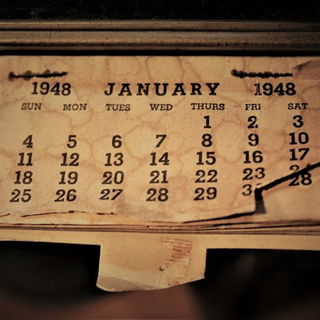A leap year is a year that has 366 days, instead of the usual 365 days. This happens every four years, when an extra day, February 29th, is added to the calendar. The next leap year will be 2028.
When is the next Leap Year?
The following years are going to be Leap Years:
| 2028 | 2032 | 2036 | 2040 |
| 2044 | 2048 | 2052 | 2056 |
| 2060 | 2064 | 2068 | 2072 |

Why Do We Have Leap Years?
The extra Leap Day is added to the calendar every four years so that our calendar stays synchronized with the astronomical seasons.
If our calendar had the same amount of days every year, the calendar would eventually drift away from the events it is supposed to track and coincide with. The extra day corrects this discrepancy between the dating system and the solar system.
This happens because the Earth's orbit around the Sun takes approximately 365.25 days. However, it is not possible to represent a quarter of a day in a calendar, so a Common Year in the Gregorian calendar has 365 days. As a result, it does not perfectly align with the solar year.
This .25 difference is what gradually makes our calendar become out of sync, and over four years that extra day is added to realign the calendar and give Earth that additional time to do a full orbit around the Sun.
If the Leap Year didn't exist, after 100 years of having .25 fewer days, the seasons would be off by 25 days, and the countries in the Northern Hemisphere such as the United States would experience Summer in February.
How are Leap Years calculated?
When the Gregorian calendar was established, the following rules were designed to calculate Leap Years:
For a year to be a Leap Year:
- it needs to be divisible by 4...
- However, if the year can also be divisible by 100, it cannot be a Leap Year...
- Unless it is divisible by 400, in which case it is a Leap Year.
The reason these extra rules have to exist is that although we abbreviate to say that a year is 365.25 days, it is actually closer to 365.256 days. That extra 0.006 of a day leads to errors in the calendar if not corrected with the additional exceptions.
For example, century years that are divisible by 100, such as 1800 or 1900, can't be Leap Years, unless they are also divisible by 400, as happens with the years 1600 and 2000, which were Leap Years.
Although this calculation system has worked fairly well, it is still not completely accurate, and scientists are looking for a way to regulate Leap Years better in the future.
Who invented Leap Years?
The Egyptians
The Egyptians were among the first civilizations to recognize the problem of the drifting calendar when in 238 BC the priest's assembly of Canopus made a decree honoring Pharaoh Ptolemy III. At the time a calendar year in Egypt was 360 days plus a "Little Month" consisting of 5 days. One suggestion in this decree was that an extra day should be added between the end of the Little Month and New Year.
The day was also at the time proposed to be a festival in honor of a group of people called the Good-doing Gods.
Although decreed, the idea of adding an extra day every 4 years was not a popular one among priests and so the amendment to the calendar never took place.
The Romans

Leap Years were introduced in the Julian Calendar, in 45 B.C. Julius Caesar employed a mathematician called Sosigenes of Alexandria to address the problem of the drifting calendar, which the Roman Empire had also noticed. Sosigenes of Alexandria suggested adding an extra day every 4 years to the Julian Calendar. The calendar's only rule for Leap Years was that any year divisible by four was a Leap Year. This overcorrected the problem, and created too many Leap Years; every 128 years, the calendar would drift 1 day from the astronomical seasons.
The Pope
In 1582, the Gregorian Calendar was introduced, named after Pope Gregory XIII. He was responsible for introducing some new reforms. Firstly he realigned the calendar with the season, he did this by removing days from the calendar that year. October the 4th was followed immediately by October the 15th, erasing ten days from the year. The additional rules on what should happen when the year was divisible by 400 and 100 were also affected. This realigned our calendar with the seasons, and this has remained the case ever since.
Learn more about the Gregorian Calendar.
Leap Year Facts and Traditions
- Since the 5th century, February 29, or Leap Day, has been designated as a day for romance and gender role reversal. Tradition says that on Leap Day women should propose to men. The movie with Amy Adams titled "Leap Day" is about this tradition.
-
The chances of being born on a Leap Day are 1 in 1,500. There are currently around 190,000 people in the United States whose birthday is on February 29.
- A person who is born on a Leap Year is known as a Leapling. Some people believe those born on a Leap Day are born into good luck.
- However, in some cultures, it is bad luck to get married on a Leap Year.
- The people of the town of Anthony in Texas have declared it to be the Leap Year capital of the world. Every year they have Leap Year Festivals and Leap Day Birthday Parties for those who are born on Feb 29th.
You might like to read these articles next:











